At first this year, I didn’t think about making hard cider since I’m just bringing online ~15 gallons of cider from the 2009 batches. But then I remembered a conversation with JRR a number of years back, about forcing yourself to make cider each year, since it takes about a year of aging to get a batch in drinkable condition. So that means if you skip a cider year, it will be at least two years before you’ll have any hard cider to drink. With that in mind, two weekends ago I placed a special order for 10 gallons of un-treated apple cider (at $5 a gallon) with my cider guy at the downtown farmers market. Since last years cider had preservatives (sodium benzoate) and took FOREVER to ferment out. I worked out a deal with my cider guy for a special order of cider without any preservatives.
The cider guy’s schedule is to press the apples on Friday, for delivery to the farmers market on Saturday morning. So this past Saturday morning, I picked up my fresh apple cider order and as soon as I got home I pitched it with yeast.
By the evening the cider was fermenting away nicely (see side notes below). In about another week or two, once the main burst of fermentation has died off, I’ll rack the cider to a secondary fermentor to let the cider clarify for at least 6 months.
Side Notes:
1) I finally kegged two out of the three batches of the 2009 cider. The ones I kegged used the Red Star Premier Cuvee and Cote de Blanc yeasts. Both of the ciders turned out very good, but the Premier Cuvee ended up being just a bit clearer and cleaner tasting then the cider that used the Cote de Blanc. But in the end they both fermented out into a pretty satisfactory product.
2) Another interesting note about the yeasts was that even though the cider is the same cider between all three batches from 2009. The final product was noticeably different depending on the yeast strain that was used. I still don’t know the final results of the cider that used the Lavin yeast, since I’m out of wine bottles and kegs. But for the two different Red Star yeasts that I used, there was a noticeable difference in the final product.
3) If you’re planning on using a wine yeast that comes in a dried packet. Plan on using at least 2 packets (but preferably 3 packets) of yeast when doing your initial pitch of yeast. For this year’s run of hard cider, I only pitched one packet of the Premier Cuvee yeast, but for the Cote de Blanc I pitched two packets of yeast (since I only had those three packets of yeast left in the fridge from 2009). The batch using the Cote de Blanc seems to be fermenting a lot quicker then the Premier Cuvee. But seeing how I used two packets of the Cote de Blanc, this shouldn’t be a surprise. But with wine yeast packets running about $0.59 a piece, plan on shelling out a couple of buckets for three packets of yeast. You’ll thank yourself later on.
4) When I picked up my cider order at 7am at the farmers market, while I was shooting the breeze with the cider guy. He let me know that I wasn’t the only person this year to place a special order for un-treated apple cider. He said that two other guys placed five gallon orders for un-treated cider. So I guess that word on the street is spreading that my cider guy will fill orders for un-treated apple cider.
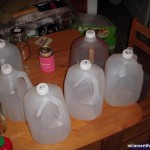
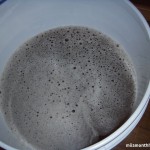
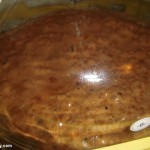
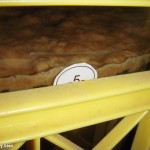
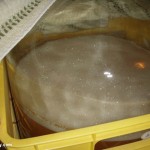
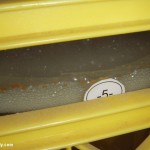
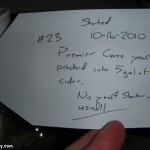
One comment on “Hard Cider – Batch 22 & 23 – October 2010”